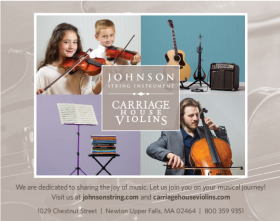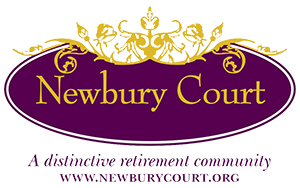Search
Saturday, December 5, 2015, 3 pm, Emmanuel Church, Boston
Sunday, December 6, 2015, 4 pm, First Unitarian Church, Worcester
Chant de L’Eglise en Concerto Esprit-Joseph-Antoine Blanchard
Conditor alme siderum • C’est a la venue de Noel • Or nous dites Marie (1696–1770)
Ou s’en vont ces gays Bergers • Les Bourgois de Châtres • Vous qui desiré sans fin
Notre bon pere Noé • O créateur • Savez-vous, mon cher voisin • A minuit fut fait en Reveil
(title unidentified) • Grace soit rendüe a Dieu de la Sus
L’Hiver Charles-Hubert Gervais (1671–1744)
Intermission
Sinfonia VI for traverso, violin, viola, and continuo Michel Corrette (1707–1795)
From Six Symphonies en Quatuor contenant les plus beaux Noëls
Allegro (Tous les Bourgeois de Chartres)
Amoroso (Quoy ma voisine est tu fâché)
Allegro (Bon Joseph ecoutez moi)
Lauter Wonne, lauter Freude Georg Philipp Telemann (1681–1767)
Songs set to Shakespeare texts Thomas Augustine Arne (1710-1778)
Under the Greenwood Tree
Blow, blow thou winter Wind
The Owl
Greensleeves 16th-century English
Jonas Budris, tenor
Suzanne Stumpf, traverso; Sarah Darling and Megumi Stohs Lewis, violins
Daniel Ryan, cello; Michael Bahmann, harpsichord
Green Season Program Partner: Tower Hill Botanic Garden
Program Notes
The depiction of the seasons through music has a long history dating back to Medieval times. While Antonio Vivaldi’s The Four Seasons violin concertos are the most well-known example of a composer’s depiction of all four seasons, there were certainly many predecessors and contemporaries. For this program, we focus on music from the Winter season—the time of year that possesses the harshest weather along with some of the most festive celebrations. Our chosen repertoire explores both of these aspects.
The French noël’s origins can be traced to the 13th century. By the 15th century, the noël developed into the form that characterized it through the 18th century—a strophic song sung in the vernacular, often of folksong origin. By the 17th century, completely instrumental noëls began to appear. Michel Corrette and E.-J.-A Blanchard were two of many French Baroque composers who created instrumental settings of popular noël melodies.
Blanchard received his early musical training in the southern French city of Aix-en-Provence and served as maître de musique at various churches in southern France before his appointment as one of the sous-maître de musique at the Chapelle Royale in Versailles. As a composer of church music, he became well-known for the works he wrote for the chapelle and for the Concert Spirituel. His noël settings, which receive their regional premiere on these concerts, are his only surviving instrumental works. Composed for orchestra and including many wind instruments, these inventive settings make a rather comprehensive use of instrument pairings and juxtapositions that enhance the varied characters of the noëls. Although his instrumentation is lavish, the work is never composed in more than four parts, making it easily adaptable to our ensemble’s instrumentation.
Michel Corrette made an important contribution to French musical life as an author of numerous musical instruction books as well as through his compositions. He was an ardent advocate of the
Italian style, and his works show the influence of Vivaldi and other Italian composers. It is his internationalism and lively imagination which shine through in his Symphonies de noëls. His variations on the noël melodies include virtuosic figuration in the Italian style in the outer movements, with a middle movement in the champêtre style imitative of bagpipes.
Charles-Hubert Gervais was primarily a composer of operas and cantatas. However, he received substantial recognition for his motets which were enthusiastically received at the Concert Spirituel. After 1726, along with Campra and Bernier, he held the position of sous-maître de musique at the Chapelle Royale. (Blanchard was one of the musicians appointed to assist them in 1738.) Gervais’ compositional style blends both French and Italian tastes. His cantata L’Hiver also receives its regional premiere in these concerts. It displays virtuosic Italianate aspects in the furious winter winds unleashed by the instruments in the first aria and in its evocation of the festive jocularity of winter by the unison trebles in their imitative dialogue with the bass in the concluding aria. In contrast, the poised French ornaments for the flute and voice in the second aria gracefully depict the gifts of the milder seasons.
The prolific and seemingly tireless Georg Philipp Telemann composed at least twenty annual cycles of cantatas totaling over 1,700 for the cities of Eisenach, Frankfurt, and Hamburg. Due to Telemann’s talent and industry as a publisher, his cantatas received wide circulation throughout Germany. The cantata presented on this program is from a published cycle Telemann engraved himself and sold by subscription. Composed for the fourth Sunday of Advent, Lauter Wonne, lauter Freude describes two entirely different fates—the bliss that the believers will experience as captured in the joyful flute figuration in the first aria versus the unhappiness that frustrates non-believers portrayed in the halting phrases and mocking laughter motif in the second aria.
Thomas Augustine Arne enjoyed a long, colorful career as a composer for the theaters and pleasure gardens of London. Among his most famous vocal works are settings he made of songs from
Shakespeare’s plays. Arne’s settings of Under the Greenwood tree and Blow, blow thou winter Wind were written for a 1740 revival of As You Like It at the Drury Lane theater. For this revival, the play was
renamed Love in a Forest and also incorporated songs from Love’s Labour’s Lost, including Arne’s
charming setting of The Owl.
— Daniel Ryan and Suzanne Stumpf











Daniel Ryan and Suzanne Stumpf, Artistic Directors
349 Boston Post Road, Weston, MA 02493
tel. (781) 466-6694
All content © Musicians of the Old Post Road
Privacy Policy
Terms & Conditions
